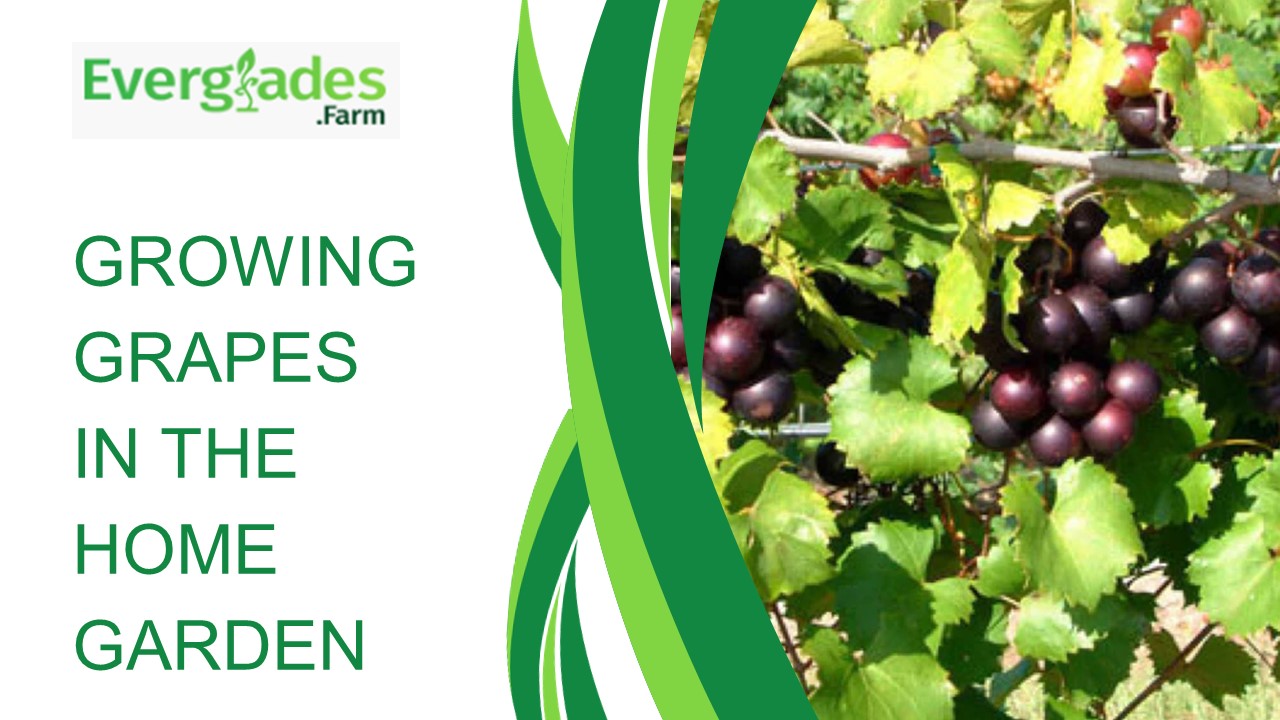Growing Grapes In The Home Garden
Title:
Growing Grapes In The Home Garden
Description:
Expert tips for growing grapes at home. Learn how to cultivate healthy plants and achieve an abundant harvest in your garden. – PowerPoint PPT presentation
Number of Views:3
Title: Growing Grapes In The Home Garden
1
GROWING GRAPES IN THE HOME GARDEN
2
Cultivating grapevine plants at home has become
popular. Grapes produced at home often taste
better than the ones bought from stores.
Home-grown grapes are a good source of
antioxidants, important vitamins, and minerals,
all of which are good for your health.
Cultivating and harvesting one's own grapes gives
you a feeling of pride. But you need to take good
care of these plants and make sure they receive
the attention they deserve if you want your
grapevine plants to stay healthy.
You need to be careful about planting, watering,
and the fertilizers you use. Here we will talk
about how grapes are grown. We will tell you
everything you need to know to grow healthy grape
plants!
3
Tips For Growing Grapes
Let's look at the step-by-step process of how to
grow grapes at home
4
Selection and Preparation of the Site
Choose the location where you will be growing the
grapevine plants. Take into account elements like
soil drainage, sunshine exposure, and available
space. Choose an area that gets at least 6 to 8
hours of direct sunshine each day since grapes
thrive best in full sunlight. To stop the growth
of fungal illnesses, make sure the area is
well-ventilated.
Grapes-like soils with a pH range of 5.5 to 7.0
and good drainage. To enhance soil quality,
assess the composition of the soil and add the
appropriate amendments. Grapes grow best in sandy
loam or loamy soils because they have excellent
drainage and hold enough moisture.
5
Getting the soil ready for grape planting
For grapevine plants to thrive, the soil must be
prepared properly. Start by clearing the planting
area of any weeds, pebbles, or other objects.
Use a garden fork or tiller to loosen the soil to
a depth of 12 to 18 inches. To enhance soil
fertility and structure, add organic matter, such
as compost or well-rotted manure.
6
Planting the grapevine plant
Purchase plants from a trusted nursery to ensure
you get high-quality plants. Many nurseries sell
grapevines for sale.
Make a hole and fill it with garden soil and
compost. Make sure the roots of your grapevine
are facing downward before inserting it into the
hole. Fill the hole with dirt, compact it around
the roots, water the well, and cover it with cut
grass.
The vine will need a wire or netting system for
vertical support after planting. The grapevines
grow healthier and produce more fruit when
supported by a trellis that also enhances
ventilation and sunshine exposure.
7
Water requirements
Watering is one of the most important steps when
it comes to how to care for a grapevine. Although
once planted, grapes are drought-tolerant,
frequent watering is still required, particularly
during dry spells throughout the growing season.
Young vines need to be watered more often than
adult ones. To promote deep-root development, aim
for deep watering. Drip irrigation and soaker
hoses are the best techniques since they provide
water straight to the roots with the least amount
of evaporation.
8
Mulching and pruning
Mulching is important for grapevines. It is
another crucial step in the care of grape vines.
By lowering evaporation, it aids in soil moisture
retention, controls soil temperature, and
inhibits weed development.
Around the base of the grapevines, spread a layer
of organic mulch, such as straw or wood chips,
keeping it a few inches away from the trunk. As
the organic waste decomposes over time and
improves overall plant health, mulching also
increases soil fertility.
For grapevines to be healthy and produce more
fruits, pruning is an essential chore. Pruning is
done in the dormant season, which is normally in
late winter or early spring. Grapevines need to
be pruned back significantly every year to help
manage the size of the plant and limit the
overproduction of grapes.
9
Fertilizing vines to promote strong growth
Regular fertilization is beneficial to
grapevines' development and yield. To identify
nutrient deficits and modify fertilization, do a
soil test. Early in the spring, or as directed on
the packaging of the fertilizer, apply a balanced
fertilizer including nitrogen, phosphorous, and
potassium.
Compost or well-rotted manure are examples of
organic solutions that may be utilized to improve
the soil.
10
Managing common pests
Although several pests and diseases may affect
grapes, they can be efficiently controlled with
the right care. Keep an eye out for pests like
aphids, spider mites, or grapevine leafhoppers on
the vines.
To manage them, use horticultural oils or organic
insecticidal soaps. By maintaining optimum
ventilation, routine pruning, and the use of the
proper fungicides when required, fungal diseases
like powdery mildew or downy mildew may be
controlled.
11
Conclusion
If you're looking for high-quality plants at a
good price, visit Everglades Farm. You may get
precisely what you're searching for thanks to our
wide selection of plants, which includes banana
plants for sale and grape plants for sale, etc.
Giving plants the care and attention required for
healthy growth and long-term survival is
something we put a great focus on. Everglades
Farm provides high-quality plants that surpass
your expectations, so you can count on them!
Disclaimer- The information provided in this
content is just for educational purposes and is
written by a professional writer. Consult us to
learn more about grape plants.
12
Contact Us
Phone
305-224-6884
Website
www.everglades.farm
Address
19775 SW 296 Street Homestead, FL 33030






























